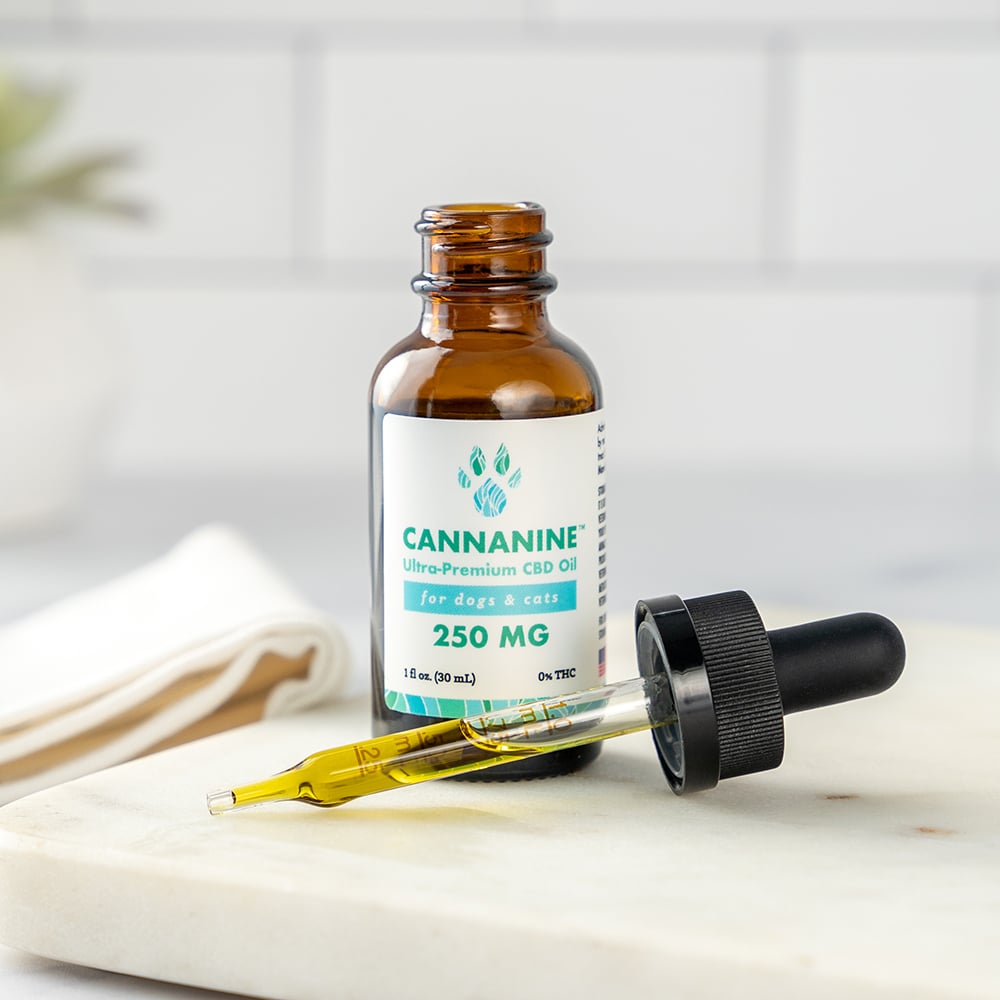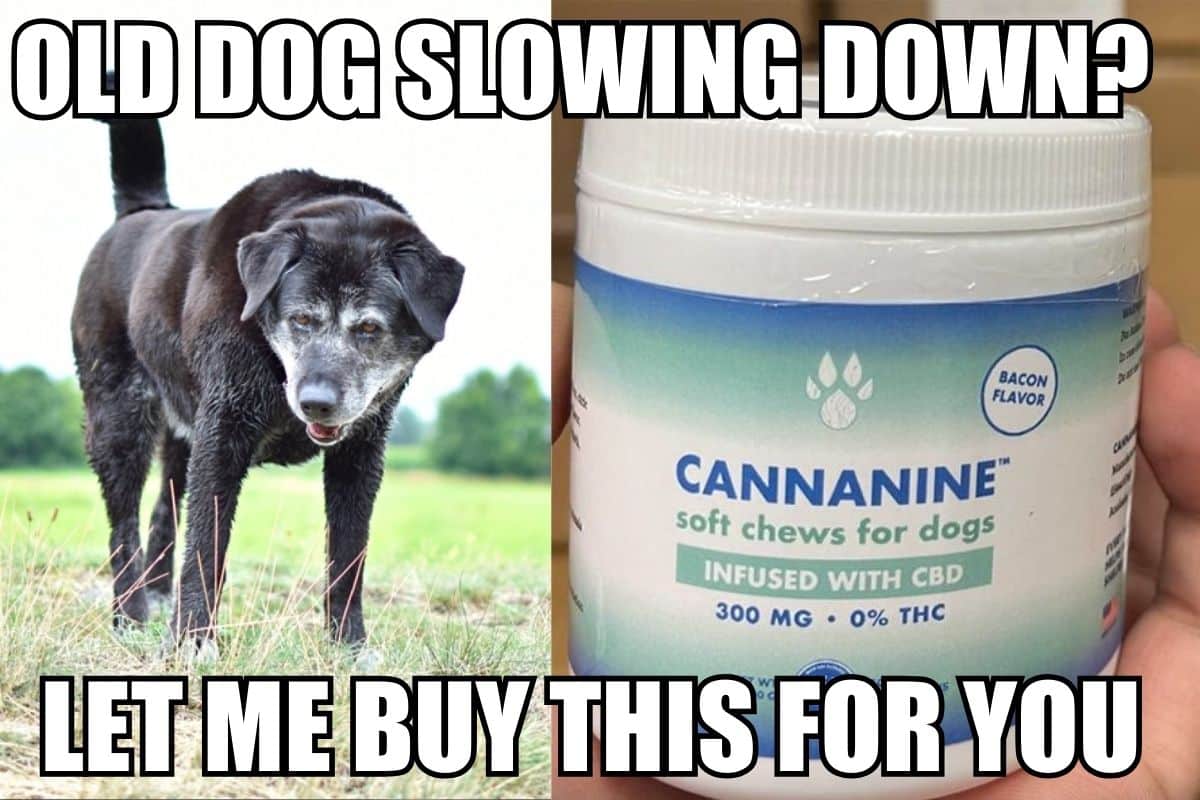
Post-Pandemic Separation Stress: How To Help Your Dog Or Cat Adjust
Most of us are more than ready for the COVID-19 pandemic to be over—except maybe our furry family members! Dogs and cats all over the world have been loving the stay-at-home orders. Having their humans around 24/7 has been a dream come true, and adjusting when they go back to the daily grind is bound to cause major dog stress and kitty stress.
Now that we are transitioning back to work and school, we need to prepare our pets for the new normal, especially our devoted dogs. According to animal psychologist Dr. Roger Mugford:
“With such an overload of quality time with their families, dogs are building up a huge reservoir of over-dependency which could see them suffer when mums and dads suddenly return to work and the children go back to school,” Dr. Mugford told The Times.
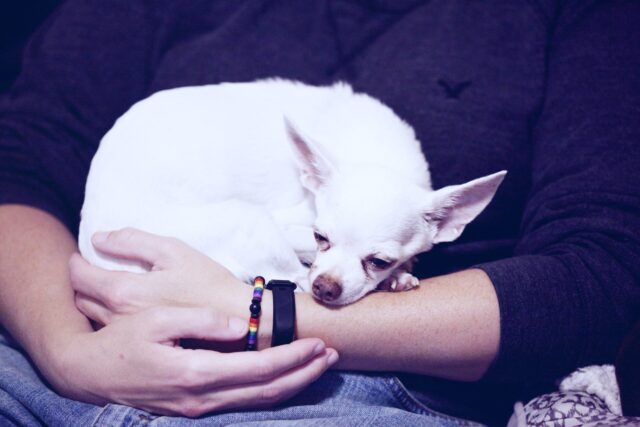
Dog Separation Stress Is Expected To Worsen After The Pandemic
For the past year, dogs have enjoyed more walks, belly rubs, couch time, and attention from their people than ever before. Even pups that have never suffered from separation stress are likely to feel the stress when things suddenly return to normal. This particular form of dog stress is characterized by worry, fear, and loneliness when home alone. It can also lead to acting out, such as compulsive self-soothing or destructive behavior.
In addition to long-term family pets, many shelter dogs found new homes thanks to the pandemic. These pups may be hit hardest of all when parents return to work and children return to school. Research shows that rescue dogs are more likely to suffer from separation stress due to the uncertainty and upheaval in their pasts.
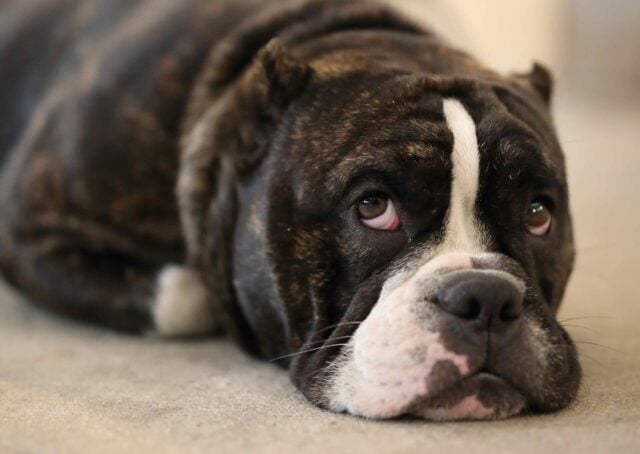
Our Own Stress Also Adds To Dog Stress
Even if your dog has spent time home alone in the past, the pandemic has changed the game. Not only has your pup gotten used to the new normal, but they have also been exposed to your stress. You may have lost a friend or loved one to COVID-19. Or maybe homeschooling and working from home have you feeling the stress.
Studies show that dogs can easily sense our tension and often take it onto their own shoulders.
Dog Stress Symptoms
How can you tell if your dog is suffering from separation stress during the post-pandemic transition? Watch for signs such as:
- Barking, howling or whining when you leave (possibly lasting for hours)
- Having “accidents” in the house, although they are potty trained
- Destructive behavior such as chewing furniture or scratching at doors and windows
- Panting, pacing, drooling, or shaking as you prepare to leave
- Self-injury from obsessively chewing their body or trying to escape the home

What Can You Do To Calm A Stressed Dog?
- Ask your vet for dog stress medication such as Clomipramine and Fluoxetine
- Turn to alternative therapies such as acupuncture, aromatherapy, and canine massage
- Fill a puzzle toy with treats to distract him from your departure
- Try a dog stress vest or soothing pheromone product
- Consider a pet sitter or doggy daycare
- Establish a post-COVID-19 routine before returning to work/school
Of all these options, establishing a new routine is most important. Dogs are creatures of habit that thrive on schedules and patterns. The trick is to teach them that being alone is not a punishment and can actually be fun. If you can get them to enjoy their alone time, they will be less likely to experience separation stress after the COVID-19 crisis ends.

Establishing A Post-Covid-19 Routine With Your Dog
Prepare A Comfortable, Safe Area
The first step is to choose an area of your home where your dog will be both safe and comfortable while you are away. Many people choose to use a crate. If this is your preference, be sure to buy one that is large enough for your dog to stand up to their full height and do a full turn.
Other options include laundry rooms, bathrooms, and utility rooms. You can also use baby gates to block off a kitchen or sunroom. Many trainers prefer baby gates because they allow the dog to see, hear, and smell you during the early training phases.
Once you have chosen an area, personalize it with your dog’s bed, water bowl, safe toys, and chewing options, etc. Some people opt to play soft music while they are away. Providing a piece of clothing carrying your scent can also help stave off separation stress.
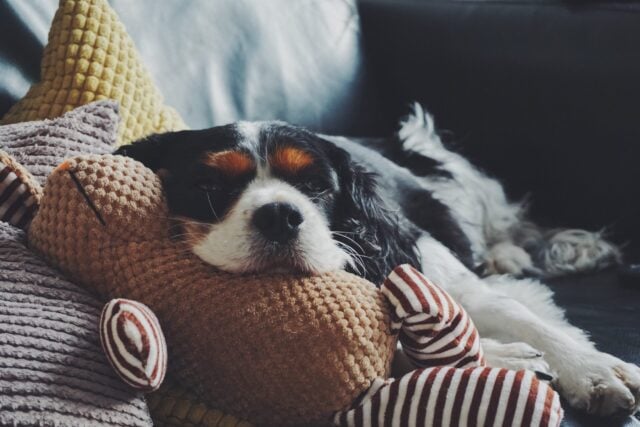
Start Your Morning Ritual Now
Start setting your alarm for the time you need to rise to get to work on time. Go through your usual rituals of getting ready, having coffee, and feeding the dog. Whatever your normal morning will look like, start going through those motions on a daily basis. Your dog will notice the change and start expecting it to happen that way.
Train Your Dog To Tolerate Alone Time
Take advantage of your time at home to begin placing your dog in their comfort area throughout the day. These sessions should only last a few minutes, especially if you have a puppy or a dog learning to be alone for the first time. Provide a highly desirable chewy or treat toy. This teaches them that isolation can be rewarding.
Make sure your dog only has access to this special item when in their isolation area!
After a few minutes, open the door or gate. Hopefully, your dog will choose to stay put and enjoy their treat, but they may also decide to leave.
Repeat this process over a period of several days, gradually increasing the amount of time your dog spends alone. When they can remain comfortably engrossed in their special treat with you out of sight for 30 minutes, you can begin leaving the house altogether.
As before, you want to increase the time away from home slowly. Try puttering in the garden for a few minutes, then work up to short trips to the store, etc. Some dogs need more time to adjust than others, so be patient.

Pretend To Go To Work
Once your pup has gotten used to you leaving for short periods of time, try mimicking your workday. At approximately the right time, get in your car and head out into the world for several hours. The idea is to show your dog that you will leave and, more importantly, you will come back. Keep in mind; no dog should ever be left alone for more than four hours, so plan on coming home for lunch or hiring a pet sitter to break up your pup’s day.
Implement a Regular Walking Schedule
Think about what time you will walk your dog when you are back to work away from home. Will you walk in the morning before you leave? Will you take a stroll in the evening after dinner? Choose a regular schedule and start adhering to it. This is all about setting expectations ahead of time to minimize the surprise and emotional impact on your dog.
If you find that your dog is experiencing more stress than usual, consider going back to the basics. James Summey, owner of JTS Dog Training in Sacramento, CA recommends brushing up on basic obedience training to remind your dog you are in control and help them feel safe.

Don’t Forget The Cat!
Our independent felines are less likely to experience separation stress than dogs, but you can help make the transition back to normal life easier for them by:
- Using puzzle toys to keep your stressed cat busy when you’re away from home
- Creating a more stimulating environment by adding cat trees to climb, boxes to play in, and/or window perches
- Adding another cat to your household (but only if you are ready to care for another pet!)
- Providing clothing or bedding that smells like you
- Beginning a daily regimen of CBD for cats
Using CBD To Minimize Cat & Dog Stress
Humans, dogs, and cats have an endocannabinoid system (ECS) which works in conjunction with their central nervous system. The ECS regulates many different functions, such as pain, mood, sleep, appetite, and immunity.
Common antidepressants affect how the brain reacts to the “feel-good” hormone, serotonin. CBD is thought to work on the ECS in a similar fashion, but without the side effects of prescription drugs. When your dog or cat is stressed, CBD alters serotonin signals to the brain, helping to regulate mood and promote calm.
Cannanine™ Organic Hemp Oil is formulated especially for dogs and cats so you can ensure the perfect dose every time. It is also 100% free of THC, the potentially harmful cannabinoid found in marijuana.
Cannanine is made from human-grade ingredients, including organically-grown Colorado hemp. What you won’t find is any trace of THC, heavy metals, harmful bacteria, yeast, mold, or other toxins. Check out our current Certificates of Analysis (COAs) here.
Here’s What Real Cannanine Customers Have To Say:
My dog has terrible separation stress and the oil has helped calm her down enough for me to go to work without having to worry about her crying all day. Thank you for my peace of mind! — Mary W.
The CBD oil is still working great for my dog and I’m so thankful for that! Recently I’ve had to leave him alone for up to five hours on a few occasions and his separation stress has not been an issue. His IBS has also been so much better! And I really appreciate your fast shipping. Thanks so much again for this amazing product!! — Kyle G.
I have been giving your CBD oil to a 2 year old adopted/rescued Newfoundland who suffers from severe separation stress. This was all caused by the physical and mental abuse of of a breeder in Ohio who had a puppy mill. I have had her now for five months and it has helped unbelievably. She now has adjusted to her home and doing quite well. — Marie F.
My Tye girl loves the taste of this. Helps immensely with her separation stress and motion sickness so she is able to go “bye-bye” in the car for a ride which is definitely her favorite activity. Thank you for this extraordinary product, Cannanine. — Kelly S.
Despite our best efforts, many dogs and cats are going to suffer from separation stress after COVID-19 runs its course and life returns to normal. Your pet has been there to help you through your stress, now is your chance to return the favor!
These statements have not been evaluated by the Food and Drug Administration. This product is not intended to diagnose, treat, cure, or prevent any disease. The information on this website is not intended to replace a one-on-one relationship with a qualified healthcare professional.

